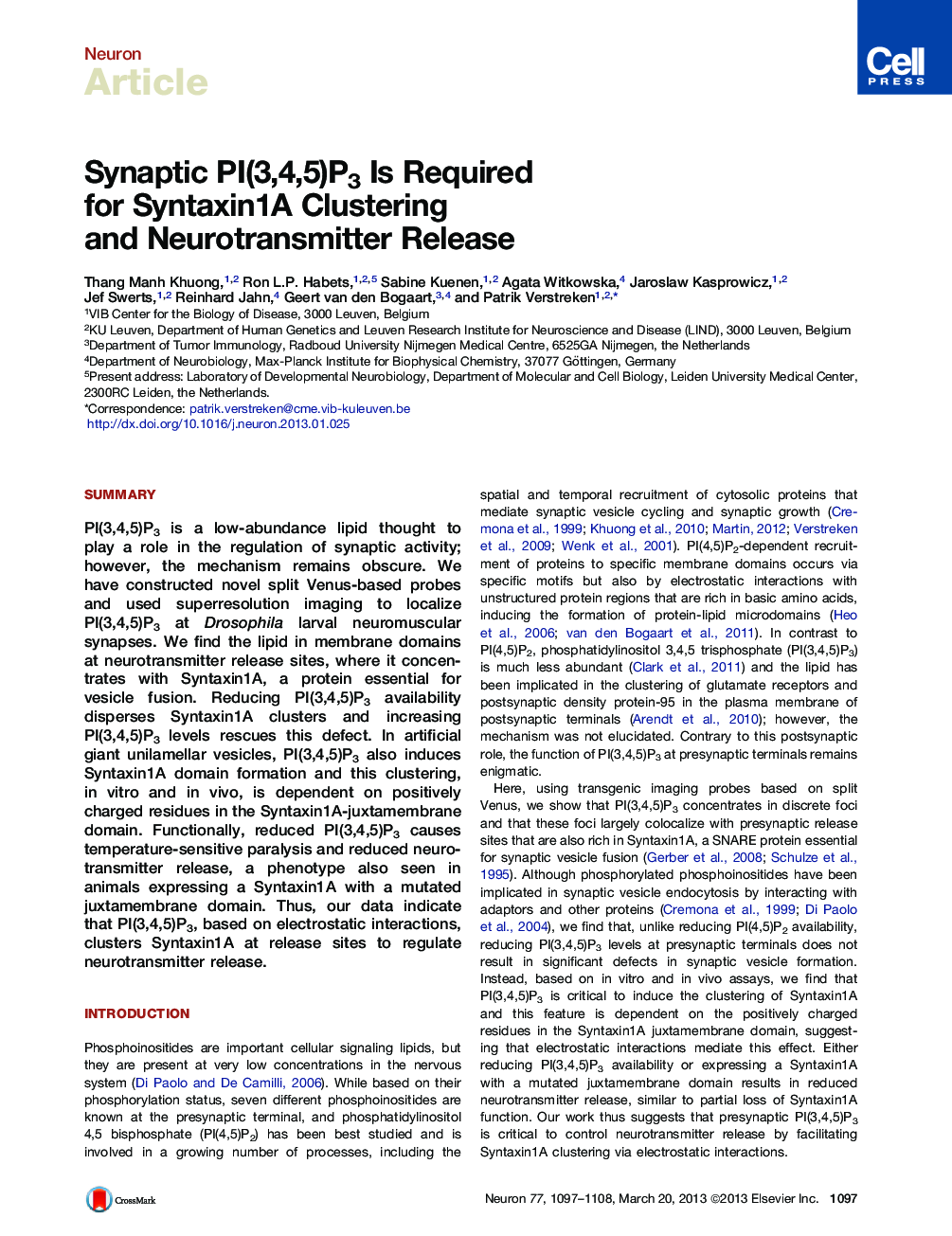| Article ID | Journal | Published Year | Pages | File Type |
|---|---|---|---|---|
| 4321537 | Neuron | 2013 | 12 Pages |
SummaryPI(3,4,5)P3 is a low-abundance lipid thought to play a role in the regulation of synaptic activity; however, the mechanism remains obscure. We have constructed novel split Venus-based probes and used superresolution imaging to localize PI(3,4,5)P3 at Drosophila larval neuromuscular synapses. We find the lipid in membrane domains at neurotransmitter release sites, where it concentrates with Syntaxin1A, a protein essential for vesicle fusion. Reducing PI(3,4,5)P3 availability disperses Syntaxin1A clusters and increasing PI(3,4,5)P3 levels rescues this defect. In artificial giant unilamellar vesicles, PI(3,4,5)P3 also induces Syntaxin1A domain formation and this clustering, in vitro and in vivo, is dependent on positively charged residues in the Syntaxin1A-juxtamembrane domain. Functionally, reduced PI(3,4,5)P3 causes temperature-sensitive paralysis and reduced neurotransmitter release, a phenotype also seen in animals expressing a Syntaxin1A with a mutated juxtamembrane domain. Thus, our data indicate that PI(3,4,5)P3, based on electrostatic interactions, clusters Syntaxin1A at release sites to regulate neurotransmitter release.
► PI(3,4,5)P3 clusters at presynaptic release sites ► Reducing PI(3,4,5)P3 but not PI(4,5)P2 disperses Syntaxin1A from release sites ► Basic juxtamembrane residues needed for PI(3,4,5)P3-dependent Syntaxin1A clustering ► Less PI(3,4,5)P3 availability leads to reduced synaptic vesicle fusion
